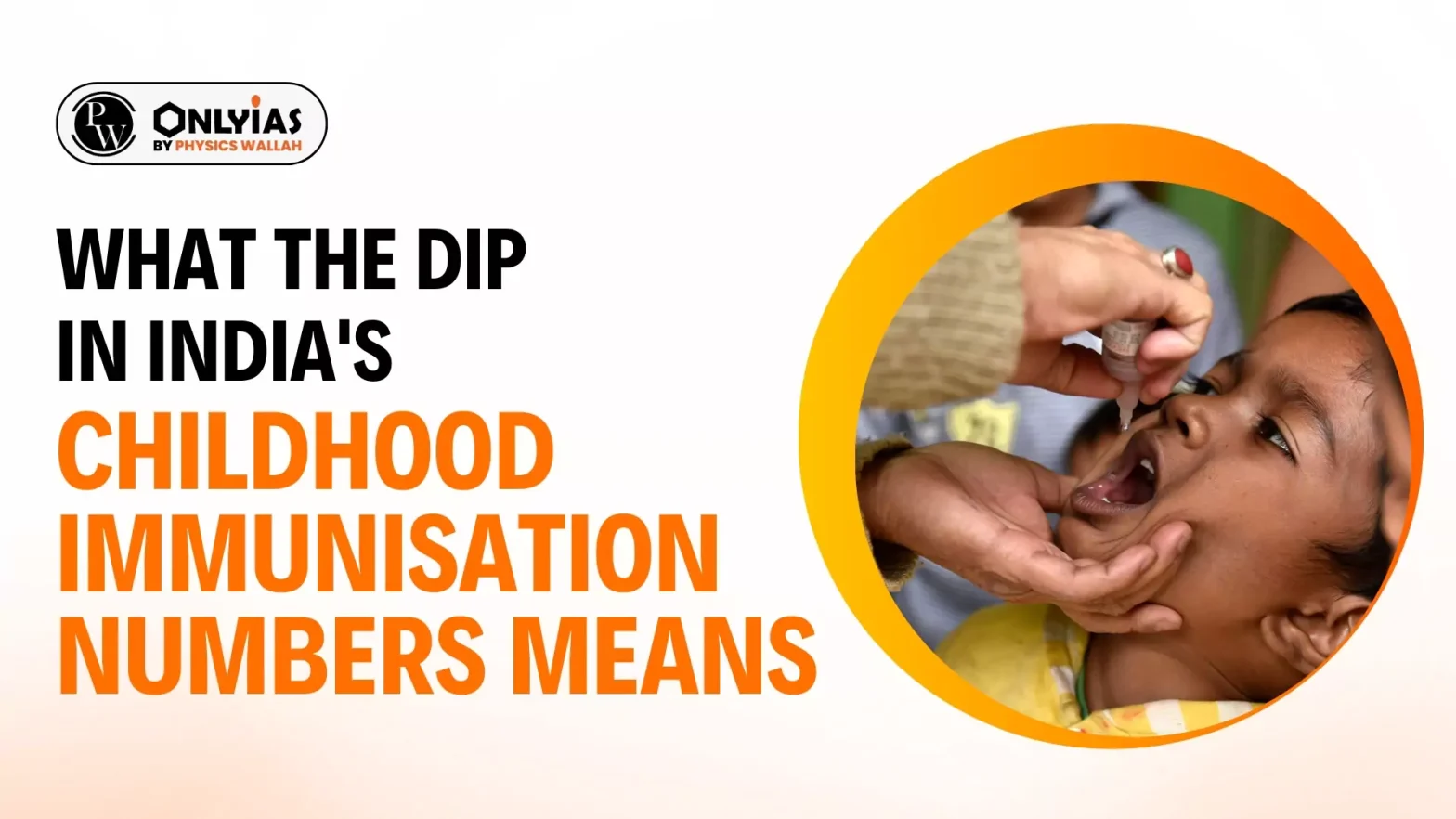In absolute terms, 2.04 million children remained under-vaccinated in 2023, slightly lower than the 2.11 million children in 2019. An expert said that the “slight” drop is a call to intensify efforts.
Childhood Immunisation Trends (2022-2023)
- Coverage Dip: DPT vaccine coverage decreased from 95% in 2022 to 93% in 2023.
- Comparison with Previous Years: Higher than 87% (2020) and 88% (2022) DPT coverage.
- Above the 2023 global average of 89%.
- Global Immunisation Status (2023): Immunisation rates stagnated globally. Resulted in 2.7 million additional unvaccinated or under-vaccinated children compared to 2019 levels.
- Significance of DPT Coverage: Used as an indicator for “zero-dose” children (those with no routine immunisation).
- Impact of Stalled Immunisation: Highlights the need for intensified efforts to reach vaccination targets.
- Future Strategies: Emphasis on addressing barriers to immunisation access and uptake.
- Importance of sustaining high coverage to prevent disease outbreaks.
Enroll now for UPSC Online Course
DPT Vaccine Coverage
- Zero-Dose Children in India (2023):
- 1.6 million zero-dose children reported.
- Increase from 1.1 million in 2022.
- Decrease from 2.73 million in 2021.
- Higher than 2019 figures of 1.4 million zero-dose children.
- Coverage of DPT Vaccine Third Dose (2023):
- 91% coverage in 2023.
- Represents a two percentage point decrease from 2022.
- Significantly exceeds the 2023 global average of 84%.
- Dropped from 91% in 2019 to 85% during the pandemic’s initial years.
- Under-Vaccination Statistics (2023):
- 2.04 million children classified as under-vaccinated.
- Slightly lower than 2.11 million in 2019.
- Implications:
-
- Need for targeted efforts to address under-vaccination and zero-dose children.
- Importance of maintaining and improving vaccination coverage rates to prevent disease outbreaks.
- Highlighting disparities and challenges in achieving universal immunisation coverage in India.
Steps Needed to Imporve Immunisation Numbers
I. Planning and Data Management
1. Data-driven approach:
- Conduct thorough surveys.
- Use GIS mapping.
2. Micro-planning:
- Develop detailed plans for each block and village.
- Identify and address specific local barriers.
3. Monitoring and evaluation:
- Set up a district-level task force for regular review meetings.
- Implement real-time monitoring systems.
II. Outreach and Accessibility
4. Mobile vaccination units:
- Deploy mobile teams to reach remote areas.
- Schedule visits at convenient times.
5. Last-mile connectivity:
- Identify and map hard-to-reach areas.
- Use innovative transportation methods.
6. Seasonal strategies:
- Develop plans for different seasons.
- Arrange for all-weather vehicles and equipment.
Check Out UPSC CSE Books From PW Store
III. Community Engagement and Awareness
7. Collaboration with local leaders:
- Engage with panchayat leaders, religious figures, and community influencers.
- Train them as vaccination ambassadors.
8. Public awareness campaigns:
- Launch multi-channel awareness drives.
- Focus on importance of complete vaccination schedules.
9. Address vaccine hesitancy:
- Create a rapid response team for rumors and misinformation.
- Conduct targeted interventions in high-hesitancy areas.
IV. Special Population Strategies
10. Targeted outreach for migratory populations:
- Coordinate with labor departments.
- Organize camps at work sites and temporary settlements.
- Implement tracking system for follow-up doses.
V. Incentives and Recognition
11. Incentive programs:
- Implement reward system for high-achieving villages.
- Recognize and celebrate successful healthcare workers.
VI. Service Delivery Improvement
12. Improved service delivery:
- Extend immunization center timings.
- Ensure regular vaccine supply and proper cold chain management.
- Train health workers in effective communication.
VII. Technology Integration
13. Technology integration:
- Use SMS reminders for vaccination schedules.
- Implement digital tracking system for each child.
VIII. Inter-departmental Coordination
14. Inter-departmental coordination:
- Work with education department for school-going children.
- Collaborate with women and child development for anganwadi-based interventions.
IX. Special Initiatives
15. Special drives:
- Organize vaccination weeks or months.
- Conduct door-to-door campaigns in low-coverage areas.
Enroll now for UPSC Online Classes
Conclusion
Sustained efforts in planning, outreach, community engagement, and technological integration are crucial to enhance childhood immunisation coverage and mitigate disparities effectively across India.
![]() 19 Jul 2024
19 Jul 2024

